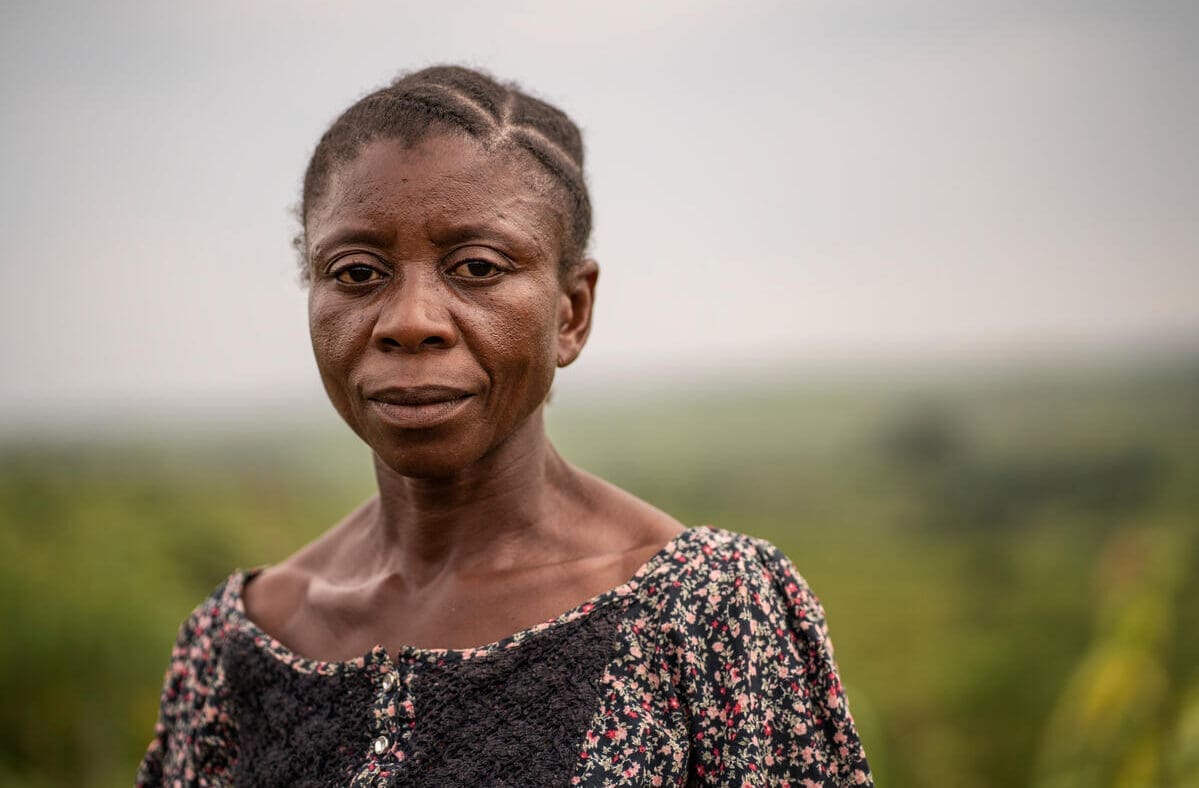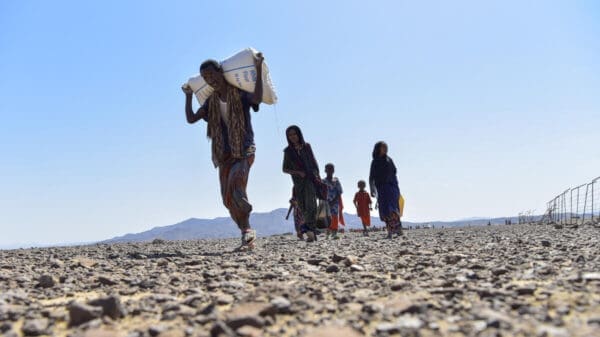
Democratic
Republic of congo
Hunger Crisis in the DRC
Today, the DRC is the world’s largest hunger crisis in absolute numbers and counts Africa’s highest number of internally displaced people. Hunger and conflict are fueling each other.
Violence and Human Suffering in the DRC
Decades of civil war have wrought havoc on the DRC. One out of every four Congolese are hungry and WFP is scaling up operations to save their lives .
people are projected to become acutely food insecure between January – June 2023
people are internally displaced
children are acutely malnourished
DRC: A Fight for Peace

July 2016
WFP launches its assistance program following the eruption of brutal conflict and ethnic violence. Rations include cereal, beans, vegetable oil and salt.
Photo: WFP/Jacques David
January 2018
Airlifts from France of Plumpy’Sup, a nutrient-rich, ready-to-use supplementary food, allow WFP to treat 9,000 malnourished children.

August 2018
The DRC Government declared an outbreak of the Ebola virus. Though the outbreak is primarily a health crisis, it hurts local businesses, prevents children from going to school and pushes people further into hunger. WFP was on the frontlines of the crisis response, delivering food to 440,000 people and meals to 25,000 schoolchildren in Ebola-affected areas.
Photo: WFP/Tara Crossley
December 2019
At the end of November, armed groups began targeting civilians and Ebola health centers, forcing aid groups – including WFP – to suspend their operations and withdraw their staff. The Ebola outbreak become the second biggest on record, killing over 2,200 people since mid-2018. WFP worked to deliver food to people suspected of carrying the disease so they don’t need to leave their homes.
Photo: WFP/Deborah Nguyen
November 2021
New findings indicate the food crisis in the DRC shows little sign of abating: Some 27 million people – one-quarter of DRC’s population – face crisis or emergency levels of hunger fueled by poor harvests, violence-driven displacement, disease and collapsing infrastructure. Agricultural production has declined amidst the violence. Infrastructure is crumbling. Multiple armed groups have displaced millions, especially in the northeast.
Photo: WFP/Gracia Bitahondwa/2021




WFP’s Work in the DRC
Despite difficult and oftentimes dangerous circumstances, WFP continues to provide support to Congolese families in need. In 2022, WFP plans to reach 8.6 million people in DRC with food, nutrition and cash-based assistance—nearly 2 million more people than last year

WFP operates UNHAS, running daily flights and carrying humanitarian workers, cargo, mobile laboratories and protection equipment. UNHAS also enables access to Ebola-affected areas.


WFP’s resilience-building programs, implemented with FAO and UNICEF, are key peace and development. Key components of the programs are training courses for women in literacy and leadership skills.


Despite difficult and oftentimes dangerous circumstances, WFP continues to provide support to Congolese families in need. In 2022, WFP plans to reach 8.6 million people in DRC with food, nutrition and cash-based assistance—nearly 2 million more people than last year


WFP teaches small-scale farmers how to run and grow their businesses , from planting and harvesting to storing and selling . Women receive special support so they can sell products like livestock or charcoal.

Help Save Lives Today
Give to deliver life-saving food to vulnerable people in conflict zones like the DRC and other countries around the world.
What’s Happening in the DRC?
Read the latest stories and updates from the Democratic Republic of Congo:


